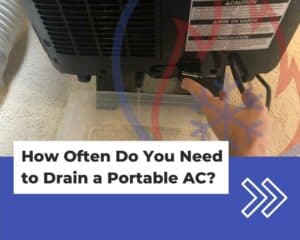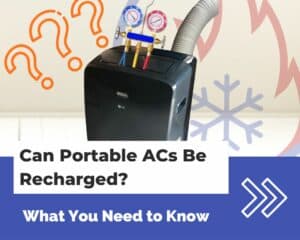Does your portable AC keep turning off, even when your room is still warm?
There are many components that will cause a portable AC to turn off.
Some components monitor the portable AC’s drain system, while others monitor its refrigerant pressures. One thing that these systems have in common is that if they malfunction, they will cause your portable AC to turn off!
In this article, I’ll go over all of the things that cause a portable AC to keep turning off. I’ll also cover things that you need to check and the steps that you should take if your portable AC keeps turning off.
Condensate Tank is Full
One of the most common reasons why a portable AC turns off is because its condensate drain tank or pan is full.
The condensate drain tank is a container that’s designed to hold water that condenses out of the air in your room.
Condensation is a normal part of the air conditioning process – it occurs naturally when humid air cools down in an air conditioner.
Most portable ACs nowadays are self-evaporating – this means that they automatically dispel the condensation out of your window through the exhaust air hose.
However, there are some situations that cause a portable AC to have a full condensate tank or pan:
- If your home is really humid, then your portable AC may produce condensation faster than it can blow it out of your home
- Your portable AC’s automatic evaporation system stops working
Fortunately, portable ACs have a device called a float switch that automatically turns off your AC when the condensate water level gets too high. This prevents water from spilling out of your AC and flooding your home.
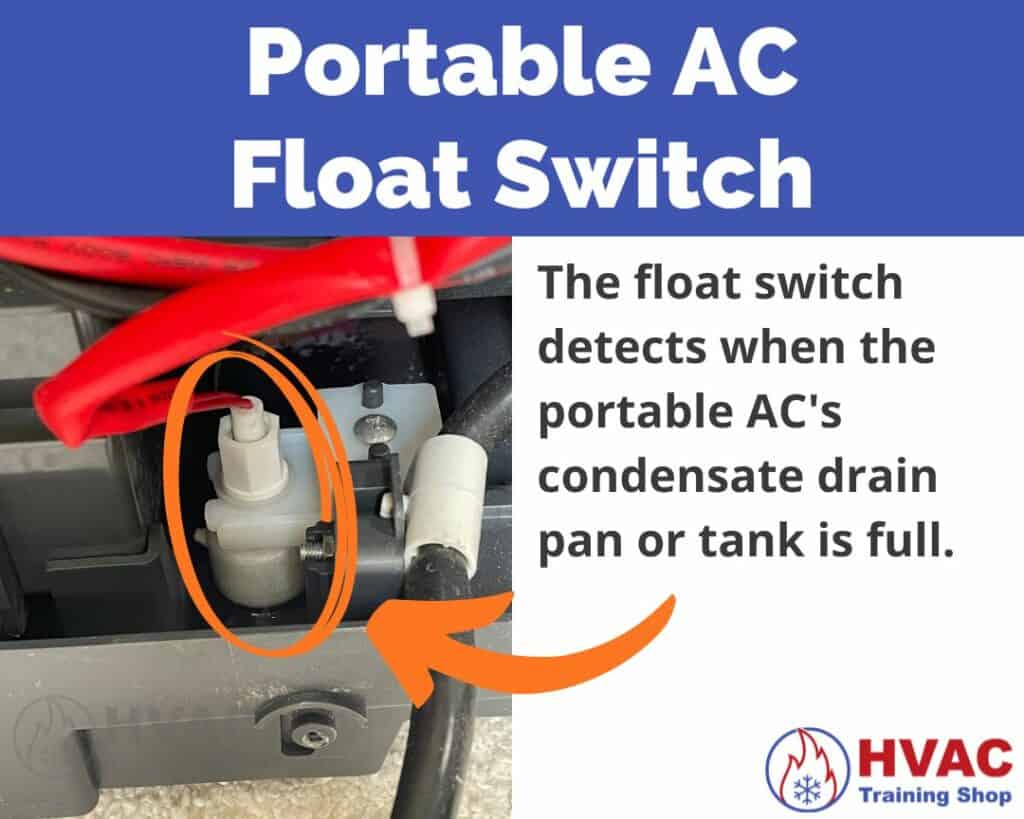
However, when the float switch detects the presence of too much water, your portable AC will stop running and won’t turn back on until the water is emptied out of the unit.
To empty out your portable AC’s condensate tank, follow these steps:
- Shut off and unplug the portable AC.
- Place a plastic container under the drain spout. You may need to elevate the AC on a table or stool to fit a container under the spout. Ensure the container is large enough to hold at least 1 liter of water.
- Remove/unscrew the drain spout cap and allow all the water to drain out.
- When the water finishes draining, replace the drain cap.
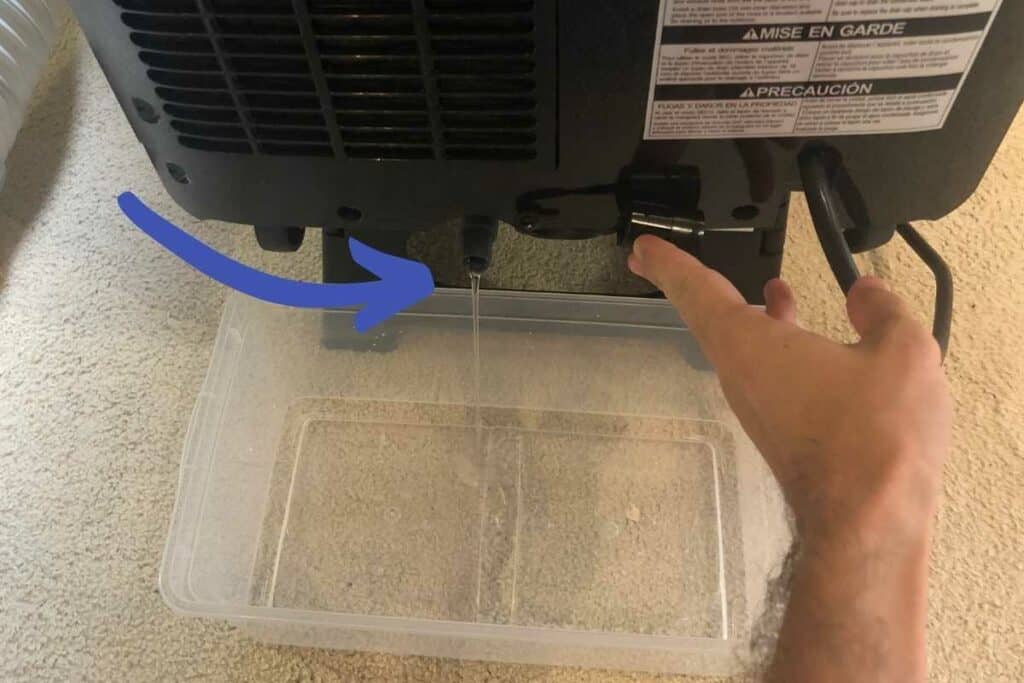
Portable AC Is Set to Wrong Mode
The portable AC’s mode setting determines how it operates. If your portable AC is set to the wrong mode, then it may keep turning off when you need it to run.
For example, if your portable AC is set to its “Dry” or “Dehumidify” mode, then your portable AC will turn off when the humidity in your room reaches a certain level, regardless of whether your room is cool or not.
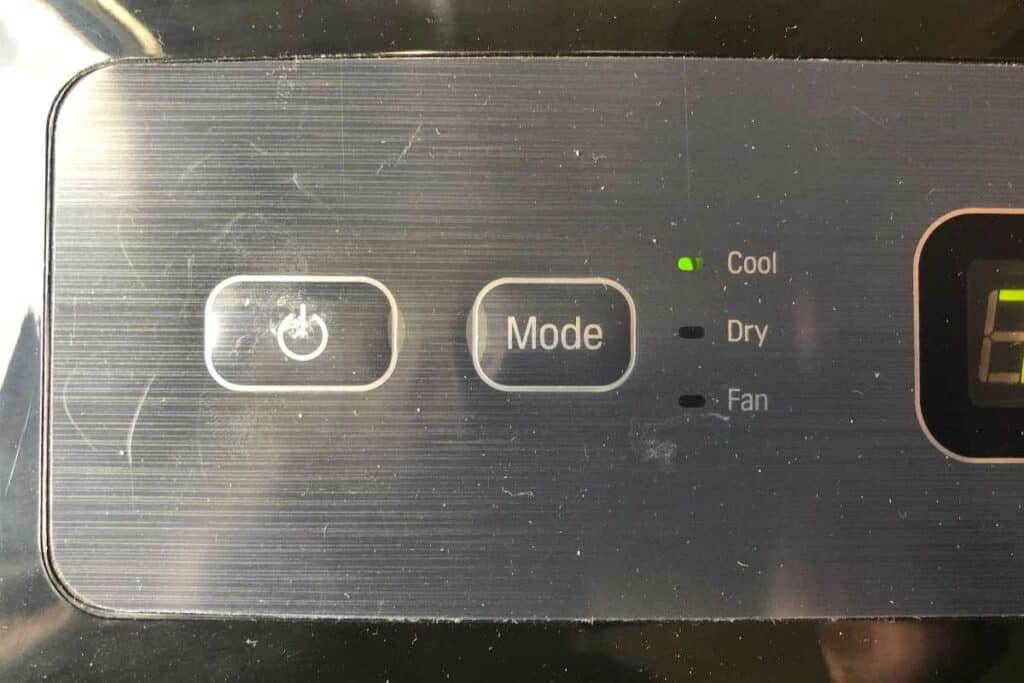
Another thing to check is the temperature setting on your portable AC. If the temperature setpoint is set too high, then your portable AC will turn off before your room gets cool.
Lastly, ensure that you aren’t using the timer function on your portable AC. Some portable ACs have a timer on them that will make them automatically turn off by themselves after a certain period of time.
Bad Temperature Sensor
If your portable AC’s temperature sensor goes bad, then your portable AC will keep turning off, even when your room is still warm.
The temperature sensor is usually located at the air intake of your portable AC.
The temperature sensor is responsible for detecting the air temperature in your home.
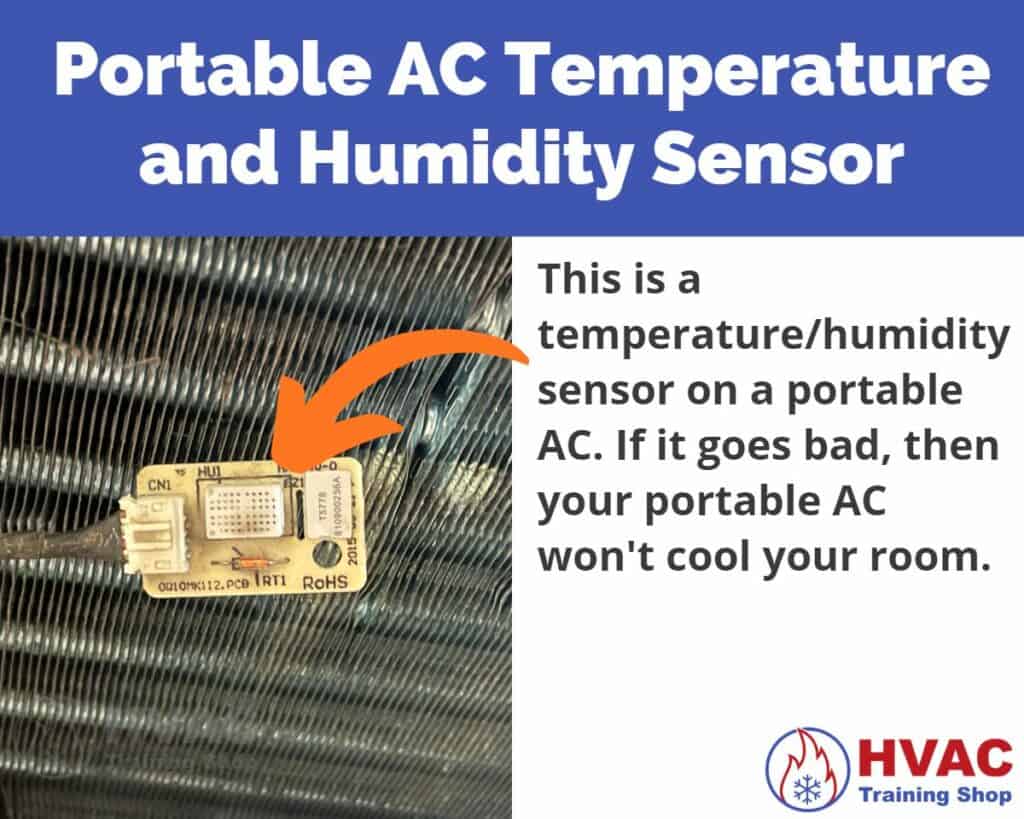
If the sensor goes bad, then most portable ACs will display an alarm code on their screen.
However, in some situations, the temperature sensor may drift out of calibration – enough to prevent your AC from turning on, but not enough to cause an alarm.
For example, the temp sensor could go bad and read 50 °F when it’s actually 80 °F in your room. In this situation, the portable AC won’t turn on, but it won’t cause an alarm either, since the temp sensor reading isn’t that far off of what it normally detects.
If your portable AC’s temperature sensor goes bad, you can try running it in dehumidify mode to cool your room.
Your portable AC will run in dehumidify mode as long as the humidity of the air in your home is over the portable AC’s humidity set point.
If the humidity in your home is already low and your portable AC won’t run in dehumidify mode either, then you can try changing the temp sensor.
You’ll need to open up your portable AC and find the part number of the temp sensor. Then you can search for the part number online and find a replacement. You should be able to find parts for most reputable brands online.
For off-brands, it isn’t easy to find parts and you might need to replace the entire unit.
Airflow Restrictions
Airflow restrictions to/from your portable AC will cause it to keep turning off due to refrigerant pressure imbalances.
The intake and exhaust airflow ports on your portable AC need to be clear and free of obstructions in order for your portable AC to run properly:
- Ensure that the front and back of your portable AC has ample clearance from nearby objects to provide a clear path for airflow.
- Check that the exhaust hose is not excessively kinked (smooth, gradual bends are fine).
- Ensure that the exhaust hose discharge outside your window is not blocked or obstructed.
Airflow restrictions may also cause your evaporator coil to freeze up. If your evaporator coil freezes up, your AC will keep turning off due to low refrigerant pressure (I’ll talk more about this in the refrigerant leak section).
Another thing that creates airflow restriction is dirty air filters, which I’ll go over below.
Dirty Air Filter
Dirty air filters cause airflow restriction which will cause your portable AC to keep turning off if they get too clogged.
Most portable ACs have at least one air filter at the evaporator air intake. This is the intake for the air that your portable AC cools and recirculates into your home.
Some portable ACs have two air filters – one for the evaporator air intake, and another for the condenser exhaust air intake. Both of these air filters need to be cleaned regularly for your portable AC to function properly.
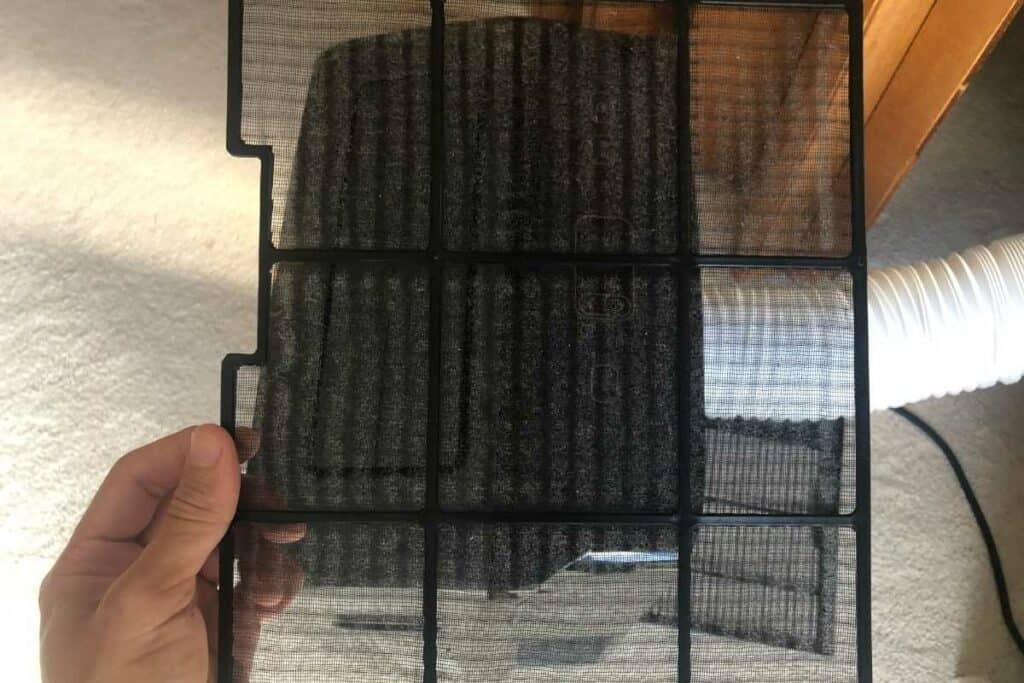
To clean your portable AC’s air filter, you need to turn off your portable AC and remove the filter grille and air filter.
Next, spray the back (clean) side of the air filter to dislodge and push out dust from the front of the filter.
If the plastic grille is dirty, clean that too, then reinstall the air filter and grille after they have dried off.
Refrigerant Leak
A refrigerant leak will cause your AC compressor to keep turning off due to low refrigerant pressure.
If your portable AC has a low pressure switch, the switch will trip when the refrigerant pressure gets too low. The low pressure switch trip will cause the compressor to turn off.
You’ll usually see an error code on your portable AC’s screen that indicates a refrigerant leak or low refrigerant.
If your portable AC has a refrigerant leak, then you’ll need to get it repaired by a licensed professional.
If your portable AC is still within its warranty period, contact the manufacturer of your portable AC unit to get them to repair it.
If your portable AC is out of warranty, find an appliance repair shop in your area. Appliance repair shops are usually the types of businesses that repair portable ACs.
Don’t bother with HVAC companies – they usually only repair central AC systems, not portable ACs.
Many times, it’s not worth the money or hassle to get a portable AC repaired, especially if a big component like the compressor goes bad. In that case, I recommend just getting a new portable AC unit.

